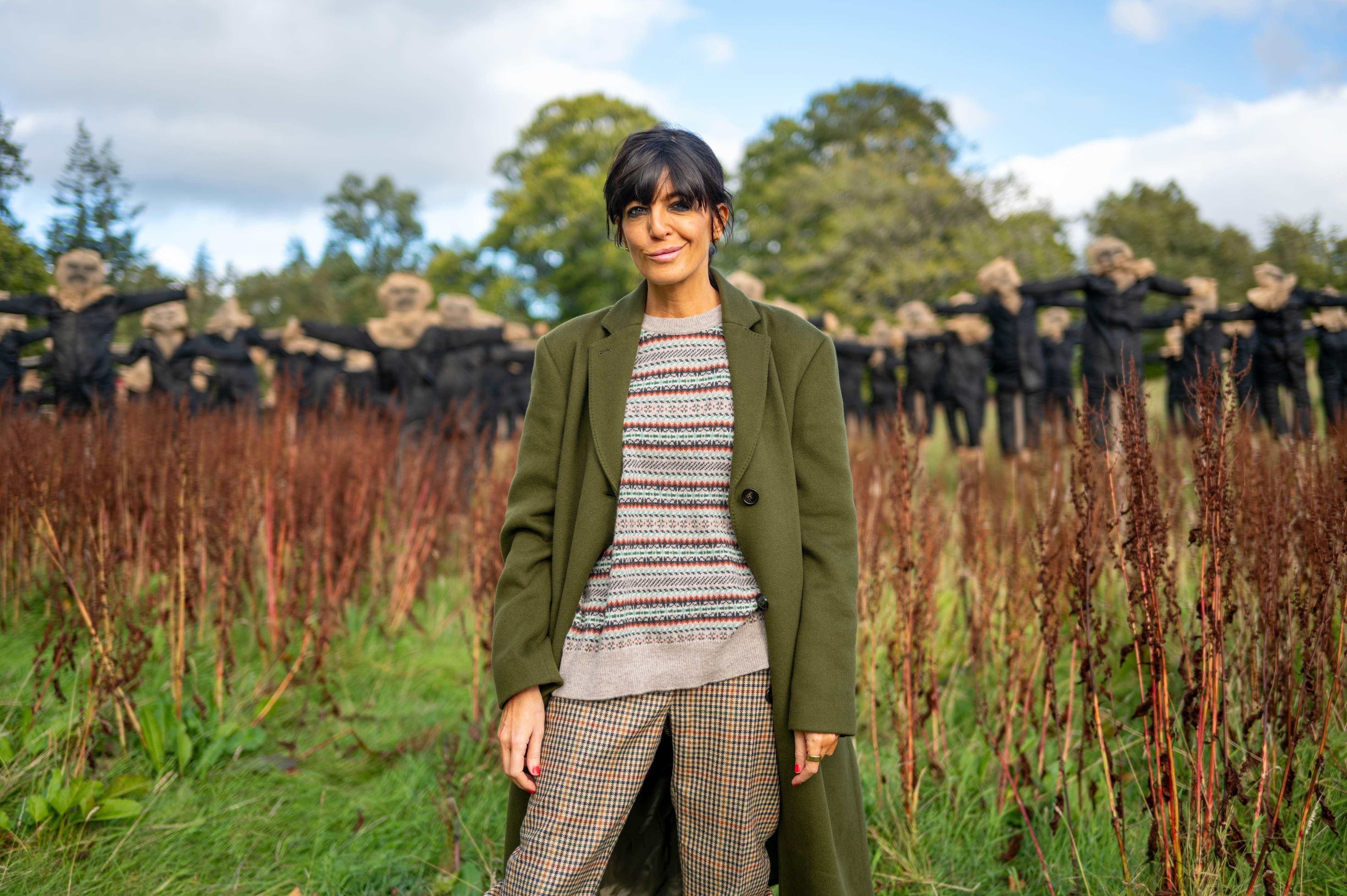Hairdressers reveal what you need to know before attempting the Claudia Winkleman fringe
These are the things you should consider before you go in for the chop…

Fringes are very much in fashion right now, from box bobs (sleek and short) to curtain bangs (sweeping and soft).
But if you’re looking for a classic, trend-defying fringe, Claudia Winkleman is the ultimate inspiration.
The presenter – who is back on screens this month with the return of BBC One series The Traitors – has had her trademark, face-framing tresses for around 20 years, and recommends that everyone try the bold bangs look at least once.
“Absolutely do it,” she told PA Media in 2021. “But here’s the thing. If you’re doing it, don’t be apologetic. A little fringe? No. That’s only fine if you’re three years old. The rest of us? Heavy.”
Hairdressers are equally as enthusiastic about the transformative power of a fringe.
“Go for it!” says celebrity hairstylist and Bristows ambassador, Desmond Grundy.
“Fringes suit everyone, they bring something to all face shapes and hair types, and can take years off you as they cover lines and ageing on the forehead.”
However, you might want to tailor the length or style of your bangs to suit your face shape, hair type and how much effort you’re prepared to make on a daily basis.

These are the things you should consider before you go in for the chop…
Face shape
Don’t be fooled into thinking ‘I don’t suit a fringe’ – you just need to find the right style for your face shape.
“A full fringe like Claudia’s is a great option for those with shorter face shapes as it will elongate the face,” says Stéphane Ferreira, hair stylist and colour specialist at Live True London.
“For other face shapes, a full fringe can still be a great option, but I advise playing around with the thickness and shape to call attention to different parts of the face.”
A choppier style might be best for rounder face shapes, he adds: “A fringe as full as Claudia’s with rounded edges like hers may be too heavy-looking, but it could be a good option to disguise a high forehead.”
A fringe can also help soften the proportions of the face, Grundy explains: “It can be cut higher to create the illusion of a higher forehead, bring a softness to square face shapes and create a rounder illusion for narrow faces.”
Hair type
“Claudia’s hair is quite thick, allowing her fringe to look full and voluminous,” says Ferreira.
“For curly hair, this exact look might be more difficult to maintain as you’ll have to straighten your hair every day to get Claudia’s sleek look. For curls, I recommend embracing your natural texture with a curly fringe.”
If your hair is on the finer side, a thick fringe might not be feasible, he says: “I would advise balancing the amount of hair used for the fringe correctly to avoid it looking sparse elsewhere.”
Maintenance
“Fringes are notoriously hard to maintain, and you will likely have to style at least your fringe every day, even if you leave the rest of your hair,” Ferreira says.
“You might also need to invest in new styling products and learn new techniques to keep your fringe in place.”
Plus, you’ll need regular trims – generally every two to three weeks – to keep your locks out of your eyes, although many hairdressers offer this service for free after you’ve had your initial haircut.
However, there are plenty of additional fringe benefits.
“Yes, a fringe requires some maintenance, but it also makes you look more put together with minimum effort and create an immediate ‘look’,” Grundy says.
“Eyebrows don’t need as much maintenance with a fringe, and it can really accentuate the eyes as it brings them into direct focus – that’s why Claudia’s look works so well with her dark fringe and dark eye make-up.”

Styling
The level of fringe styling and daily maintenance will depend on your hair type.
“For naturally straight hair, one blow dry brush is all that’s needed to keep the fringe down and straight,” Grundy says.
“Naturally wavy hair will benefit from a light hold hair spray to keep the fringe in place and behaving, whilst maintaining some natural movement.”
Ferreira recommends separating straight or wavy hair into sections before blow-drying, keeping your fringe clipped out of the way.
“Dry and style the main body of your hair as desired, then once your hair is dry, move on to the fringe, applying more water if it has dried out in the meantime,” he says.
“Be sure to blow dry directly down, and brush through as you do so, to create that smooth look.”
For curly or coily locks, use a diffuser or allow to air dry, Grundy says: “You want to leave it as natural as possible so as not to disrupt the natural shape of the hair. Some light teasing with the fingers and spraying with a light hold spray is the best approach.”
No matter your hair type, there’s one essential product you must stock up on if you’re getting bangs.
“Dry shampoo is your fringe’s best friend as it can become oily quicker than the rest of your hair, as it picks up oils from contact with your skin,” Grundy says.
“A quick spritz can freshen up the fringe in an instant, so you can go longer between hair washes and prolong your fringe shape without rewashing and styling.”